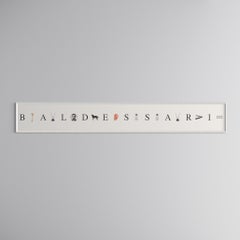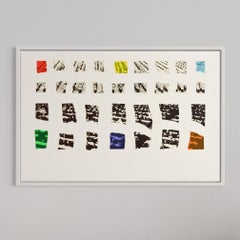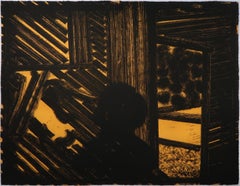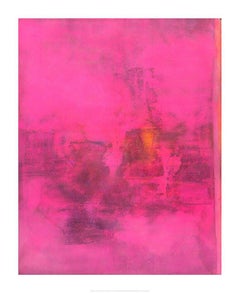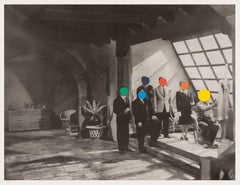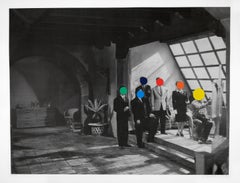John Baldessari Interior Prints
Although Conceptual artist John Baldessari is best known for the richly provocative juxtapositions of photographic images and text that characterize his prints and paintings, he actually had something of a traditional art world upbringing — if such a thing exists.
Born in Southern California, Baldessari earned several art degrees, from art education to art history to painting. He also taught art at various institutions such as the California Institute of the Arts throughout his life. Among his many students were David Salle, Tony Oursler, Jim Shaw and Mike Kelley. While helping to shape the art world in Los Angeles, he simultaneously developed his own name as an artist.
In the 1950s, Baldessari’s works were primarily semiabstract paintings, but during the late 1960s, he began to distance himself from painting, as he bristled at the idea of limiting art to a single medium. Baldessari decided to take his career in a dramatically different direction. He burned all his paintings at a funeral home in San Diego, then incorporated the ashes into cookie dough, producing (nonedible) baked goods for an exhibition at the Museum of Modern Art in New York City.
“It was a very public and symbolic act,” he said, “like announcing you’re going on a diet in order to stick to it.”
From that point on, Baldessari took on an MO of experimentation, dabbling in mediums from video to printmaking to sculpture. “I just stare at something and say: Why isn’t that art? Why couldn’t that be art?” he said in an interview in 2008.
The works for which Baldessari is most highly regarded, however, are striking collages of images and text — many of which are seemingly nonsensical — such as Tom’s Hand Grips the Steering, Wheel… (2015), in which the title’s text is displayed beneath a hippopotamus. As such is his body of work: bringing a sense of joviality to the sometimes too-serious world of Conceptual art.
Before he died in 2020, Baldessari was honored with the 2014 National Medal of Arts Award, the Americans for the Arts Lifetime Achievement Award, the Venice Biennale’s Golden Lion for Lifetime Achievement and more.
Find original John Baldessari art on 1stDibs.
21st Century and Contemporary Abstract John Baldessari Interior Prints
Lithograph, Screen
21st Century and Contemporary Pop Art John Baldessari Interior Prints
Digital Pigment
21st Century and Contemporary Abstract John Baldessari Interior Prints
Lithograph
Late 20th Century Abstract John Baldessari Interior Prints
Watercolor, Gouache, Etching
2010s Abstract John Baldessari Interior Prints
Giclée
Late 20th Century Abstract John Baldessari Interior Prints
Gouache, Etching
Late 20th Century Abstract John Baldessari Interior Prints
Watercolor, Gouache, Etching
Late 20th Century Abstract John Baldessari Interior Prints
Etching
Late 20th Century Abstract John Baldessari Interior Prints
Etching
Early 2000s Contemporary John Baldessari Interior Prints
Paper, Woodcut, Linocut
Late 20th Century Abstract John Baldessari Interior Prints
Screen
1970s Abstract John Baldessari Interior Prints
Foil
1980s Pop Art John Baldessari Interior Prints
Lithograph
1970s Abstract John Baldessari Interior Prints
Lithograph
Late 20th Century Abstract John Baldessari Interior Prints
Etching
1980s Conceptual John Baldessari Interior Prints
Lithograph, Screen
